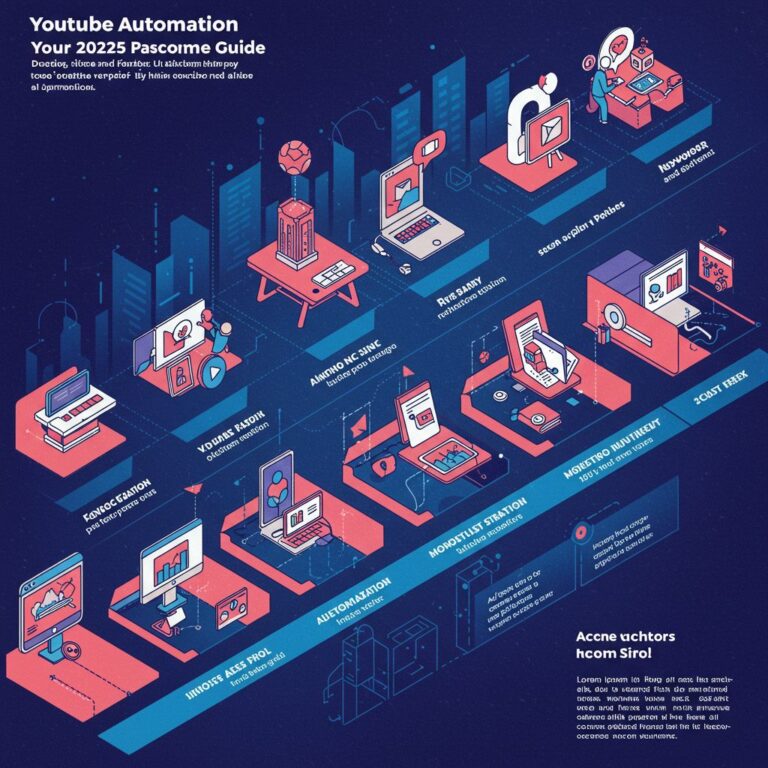In today’s rapidly evolving digital landscape, businesses are increasingly turning to artificial intelligence to streamline operations and enhance customer interactions. Among the most impactful AI technologies are chatbots, which can improve customer service, boost sales, and gather valuable data analytics. This article explores effective strategies for harnessing the power of AI chatbots to maximize success.
Table of Contents
Understanding AI Chatbots
AI chatbots are automated programs that can simulate conversation with users. They use natural language processing (NLP) to understand user queries and respond appropriately. The two main types of chatbots are:
- Rule-based chatbots: Operate based on predefined rules and scripts.
- AI-driven chatbots: Use machine learning algorithms to learn and improve over time.
Understanding the differences between these two types is critical for deploying the right chatbot strategy based on your business needs.
The Role of Chatbots in Business
Chatbots serve multiple functions across different sectors. Here’s how they can be leveraged:
1. Customer Support
Chatbots can handle a wide range of customer inquiries, reducing the need for human intervention. This not only saves time but also improves customer satisfaction through immediate responses.
2. Sales Enhancement
By guiding potential customers through their buying journey, chatbots can significantly boost sales. They can recommend products, provide discounts, and upsell based on customer preferences.
3. Data Collection
Chatbots gather valuable customer data, including preferences, behavior, and feedback. This data can be analyzed to refine marketing strategies and improve customer service.
Strategies for Implementing Successful Chatbot Solutions
To ensure the successful integration of chatbots into your business model, consider the following strategies:
1. Define Clear Objectives
Before deploying a chatbot, clearly outline what you want to achieve. Common goals include:
- Reducing operational costs
- Improving customer satisfaction
- Increasing sales
- Enhancing data collection
2. Choose the Right Platform
Selecting the appropriate chatbot platform is crucial. Here are some popular options:
| Platform | Best For | Key Features |
|---|---|---|
| Dialogflow | Complex interactions | NLP, Multi-channel support |
| ManyChat | Social media | User-friendly interface, Segmentation |
| Chatfuel | No-code solutions | Visual builder, Templates |
3. Focus on User Experience
A chatbot’s success hinges on how users interact with it. Optimize user experience by:
- Ensuring quick response times
- Using a conversational tone
- Providing options for escalation to a human agent
4. Integrate with Existing Systems
Seamlessly integrate your chatbot with existing systems such as CRM software, e-commerce platforms, and helpdesk solutions. This will ensure smooth operations and better data synchronization.
Best Practices for Chatbot Design
Adhering to best practices in chatbot design can lead to higher engagement rates. Consider these tips:
1. Personalization
Utilize customer data to personalize interactions. For instance, greet users by name and recommend products based on their previous purchases.
2. Continuous Learning
Implement machine learning capabilities that allow the chatbot to learn from interactions and improve over time. Regularly update the knowledge base to reflect changes in products or services.
3. Testing and Optimization
Continuously test the chatbot’s performance and make adjustments based on user feedback and behavior analytics. This helps in identifying pain points and enhancing overall functionality.
Measuring Success and ROI
To determine the effectiveness of your chatbot, measure key performance indicators (KPIs) such as:
- Engagement rates
- Conversion rates
- Customer satisfaction scores
- Cost savings from reduced human agent workload
Calculating ROI
An effective method for calculating ROI includes:
- Determining total costs associated with chatbot implementation.
- Estimating revenue generated through chatbot interactions.
- Comparing the two to evaluate net profit or loss.
Future Trends in AI Chatbots
The future of AI chatbots is promising, with advancements on the horizon. Here are some anticipated trends:
1. Enhanced Natural Language Understanding
As NLP technologies improve, chatbots will better understand context, sentiment, and intent, making conversations feel more natural.
2. Voice-Enabled Chatbots
With the rise of smart speakers, voice-enabled chatbots will become more prevalent, allowing users to engage through voice commands.
3. Increased Automation
Automation will extend beyond customer service to other business processes, streamlining workflows and increasing efficiency.
Conclusion
AI chatbots are revolutionizing business operations, providing immense opportunities for efficiency, enhanced customer interaction, and data-driven insights. By implementing the strategies discussed in this article, companies can maximize the potential of chatbots, ultimately leading to increased revenue and improved customer satisfaction. As technology continues to advance, staying informed of trends and best practices will ensure your chatbot remains a valuable asset in a competitive market.
FAQ
What are AI chatbot strategies for increasing revenue?
AI chatbots can increase revenue by providing 24/7 customer support, upselling products during conversations, and personalizing user experiences.
How can I implement AI chatbots for my business?
To implement AI chatbots, choose a suitable platform, define your goals, train the chatbot with relevant data, and integrate it with your existing systems.
What industries benefit the most from AI chatbot strategies?
Industries such as e-commerce, healthcare, finance, and customer service benefit significantly from AI chatbots by enhancing customer interaction and operational efficiency.
How can chatbots improve customer engagement?
Chatbots improve customer engagement by providing immediate responses, offering personalized recommendations, and gathering feedback to enhance the customer experience.
Are AI chatbots cost-effective for small businesses?
Yes, AI chatbots can be cost-effective for small businesses by reducing the need for extensive customer service staff and increasing sales through better customer interaction.









